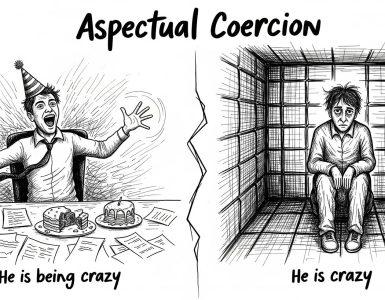The number of grammatical tenses in the English language is way more than the average in other languages. This is partly because English does not have a sophisticated mood system and many of these tenses are expressed with a mood in other languages. This feature can make learning English grammatical somewhat confusing. In this post, I am going to have an overview of the structural aspect of tenses in the English language and compare different tenses in simple to grasp tables.
important note!
Do not be fooled by the names chosen for each tense. Tense names are arbitrary and usually do not correspond with the time reference they express (for example present perfect tense does not show action in present time). The name is usually more related to the grammatical structure of the tense and in this post, we are mostly talking about that.
Categorizing tenses
English grammatical tenses can be categorized based on two aspects:
by time
- Present
- Past
- Future
by action
- Simple
- Continuous (or progressive)
- Perfect
- Perfect-Continuous
An overview of English grammatical tenses
| Present | Past | Future | |
| Simple | Present simple | Past simple | Future simple |
| Continuous | Present Continuous | Past continuous | Future continuous |
| Perfect | Present perfect | Past perfect | Future perfect |
| Perfect-Continuous | Present perfect continuous | Past perfect continuous | Future perfect continuous |
Auxiliary verbs
| Present | Past | Future | |
| Simple | do/does (support) | did (support) | will |
| Continuous | am/is/are | was/were | will + be |
| Perfect | have/has | had | will + have |
| Perfect-Continuous | have/has + been | had + been | will + have + been |
Verb inflection
| Present | Past | Future | |
| Simple | present verb | past verb | present verb |
| Continuous | -ing form | -ing form | -ing form |
| Perfect | past participle | past participle | past participle |
| Perfect-Continuous | -ing form | -ing form | -ing form |
The passive form of all tenses
In the passive voice, the main verb is always in Past Participle form, and what changes are the auxiliary verbs that can be found in the following table:
| Present | Past | Future | |
| Simple | am/is/are | was/were | will + be |
| Continuous | am/is/are + being | was/were + being | will + be + being |
| Perfect | have/has + been | had + been | will + have + been |
| Perfect-Continuous | have/has + been + being | had + been + being | will + have + been + being |
The odd ones out!
There are two tenses that are absent in the list above:
- Future simple with ‘going to’
- Future in past (also made with going to)
The table below shows their structure in the active and passive voice
| Active | Passive | |
| Future simple | am/is/are + going to | am/is/are + going to + be |
| Future in past | was/were + going to | was/were + going to + be |
* Photo by Icons8 team on Unsplash





Add comment